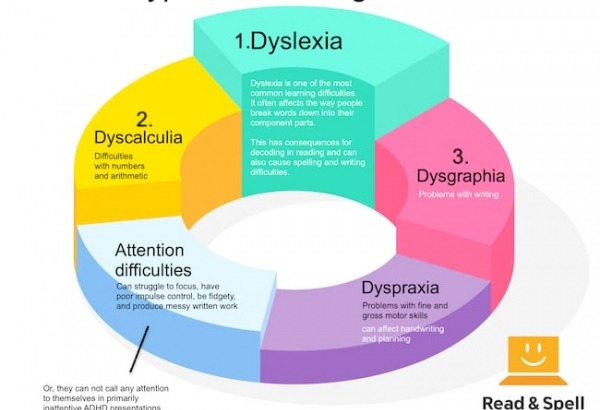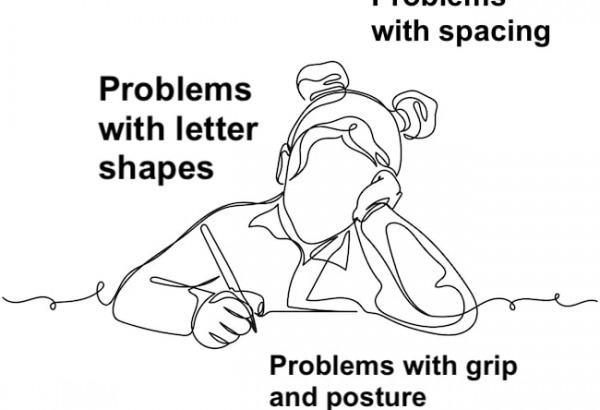Dyspraxia and autism

Dyspraxia is a motor skills disorder that can cause issues with fine and gross motor skills, social interaction, planning skills and coordination. While it is distinct from Autism Spectrum Disorder (ASD) many parents notice similar symptoms, including sensory processing issues. In some cases the two conditions can co-occur.
Research studies have found that dyspraxia is more likely to be reported amongst people with autism than in control groups; however, that does not necessarily imply a causal relationship. For parents struggling to understand their child’s diagnosis, it can help to take a closer look at the similarities and differences between the two.
What is dyspraxia?
Dyspraxia is a motor skills disorder that can affect fine and gross motor skills, coordination, planning, and aspects of social interaction. People with dyspraxia can have trouble with spatial awareness and may experience challenges with balance and movement. Their dyspraxia can lead to them falling or tripping a lot, bumping into things and even walking or running with an unusual gait. At school, these students may be treated differently, which can lead to social challenges or misunderstanding by peers.
While no two people with dyspraxia will struggle with the same symptoms, these children commonly have a hard time performing tasks in gym class, including catching, throwing and kicking a ball, and consequently may be the last to be chosen in team sports. In art class they may struggle to use scissors or paint with a brush, and in music class they can have a difficult time playing certain instruments.
Dyspraxia is also a source of handwriting problems that can interrupt a student’s ability to take notes or complete quizzes and assignments. In fact, gripping a pen or pencil can actually be physically painful for dyspraxic kids – which is why it is usually recommended that they learn touch-typing.
Dyspraxia is not related to intelligence but it can affect attention and memory, which may disrupt learning and cause poor performance in an academic context. Dyspraxia might also result in difficulty with planning, which along with handwriting difficulties, can impact a student’s ability to follow instructions, complete tasks and meet deadlines.
Learn more in our article: How to help a dyspraxic student in the classroom
What is autism?
Autism can vary widely between individuals. Social interaction is typically an issue, as is sensory processing. These individuals may not be able to pick up on cues from a conversation partner and children may prefer different ways of playing or interacting with peers. Background noise and activity can be particularly distracting and they may have an unusual ability to focus attention on specific details.
Babies who are on the autistic spectrum are often late talkers. Some people are able to speak, whereas others are non-speaking (which does not necessarily mean a lack of understanding). Speech may be at different volumes or pitches and can be repetitive with a preference for particular words or strings of language.
Reading ability varies and it has been shown that metaphors are sometimes tricky for people with autism, as is following a narrative that relies on understanding complex social interactions between characters. There can also be some balance and physical issues that come with autism, such as not allowing the arms to swing when walking or not using hand gestures.
Learn more in our post on strategies that can help learners with autism and autism and reading difficulties.
Dyspraxia and autism
What they have in common
Both dyspraxia and autism can lead to kids feeling awkward in social situations. At school these students may be treated differently by their peers and can become the target of bullying and ridicule. Some dyspraxic and autistic people have distinct speech patterns. When this occurs in dyspraxia it is referred to as apraxia of speech. They can have difficulty controlling the volume and pitch of their speech and using complex and long strings of language. Some people are hypersensitive to temperatures, light and noise and many prefer to stick to a familiar routine to help them complete day-to-day tasks. Attention issues can also be a problem and there’s the possibility of co-occurrence with other learning difficulties, such as dyslexia.
How they differ
Individuals with autism often have trouble reading emotions in other people and may not like to make direct eye-contact. They can prefer working on the computer and interacting with technology. Moreover, motor skills deficiencies are not traditionally included in a list of autism symptoms.

Difficulties at school
-
Social interaction
Students with autism or with dyspraxia may have trouble making friends and interacting with their peers. However, kids with ASD can lack interest in others, which is not necessarily the case for dyspraxic learners. -
Physical activities
Coordination can make sports a problem for both autistic and dyspraxic learners. Team sports may also be particularly problematic as they require coordination and communication with other players. These kids may find team sports more challenging and benefit from supportive and inclusive peer interactions. -
Speech and language
Dyspraxic and autistic students can experience speech and language issues; however, the causes of apraxia of speech and autism related language difficulties are different. Learn more in our post on apraxia of speech. -
Writing by hand
Autistic students often dislike making mistakes, which can cause stress when they have to write by hand. Dyspraxic students may want to use chunky markers and rubber grips on pens and pencils. For both groups of students, learning touch-typing and being allowed to use a word processor to complete written assignments is recommended. -
Imaginative play
Open activities that rely on students using their imagination can be a struggle and lead to feelings of anxiety in autistic students. Dyspraxic kids may also need some help eliciting ideas and beginning this kind of activity. -
Planning out work
Providing a folder system, color coding material and helping students keep track of assignments in an agenda/calendar is generally recommended. Students may benefit from explicit support and strategies to improve their ability to plan and manage tasks.
When other learning difficulties are present
ADD and ADHD
Attention differences, such as ADD and ADHD, can be with or without hyperactivity and can make it difficult for a student to concentrate during lessons. People with ADD and ADHD are often easily distracted which can mimic the hypersensitivity experienced by students with autism and dyspraxia. Providing a quiet and distraction free space for them to study and learn is essential.
Slow processing
When slow processing is a problem students may need material broken down into bite-size pieces and more time to understand and process what they are learning. Discover more about processing issues.
Dyslexia
Dyslexic students typically experience difficulty with spelling and reading. It is the splitting of words into their component sounds that causes problems with encoding and decoding– which is why phonics based instruction and multi-sensory learning is often recommended. Co-occurrence of dyspraxia and dyslexia is commonly observed. Learn more in our post on What’s the difference between dyslexia and dyspraxia?
Dysgraphia
This writing based learning difficulty is related to written production. It can cause children to struggle with spacing letters and words on a page and producing comprehensible compositions. Learn more in our post dyspraxia vs. dysgraphia.
How parents and teachers can help
When a child's differences are not fully understood or embraced, it can lead to feelings of low self-worth. That’s why encouraging these kids and helping them find activities that they are good at is key. If a student with autism is interested in a particular topic, allow them to study it.
Help dyspraxic learners develop their coordination skills by familiarizing them with activities before they are expected to perform them in front of others. Allow them plenty of time to learn and practice a series of movements.
Confidence-building in an academic sense is also important, as many dyspraxic and autistic learners feel disempowered in a traditional classroom. Provide them with opportunities for success and then follow up with plenty of due praise.
A literacy and typing tool
The Touch-type Read and Spell program is a literacy platform that can help students with dyspraxia and autism acquire typing skills, build confidence and develop a positive self-image. It helps students to feel and to be successful from the very beginning and teaches typing via a phonics-based method that reinforces reading and spelling skills at the same time.
For autistic learners
TTRS is a program designed to get children and adults with autism touch-typing, with additional support for reading and spelling.
Chris Freeman

close
Can an Orton-Gillingham approach to literacy help your child?
Take a short quiz to find out!
TTRS has a solution for you
An award-winning, multi-sensory course that teaches typing, reading and spelling

How does TTRS work?
Developed in line with language and education research
Teaches typing using a multi-sensory approach
The course is modular in design and easy to navigate
Includes school and personal interest subjects
Positive feedback and positive reinforcement
Reporting features help you monitor usage and progress















